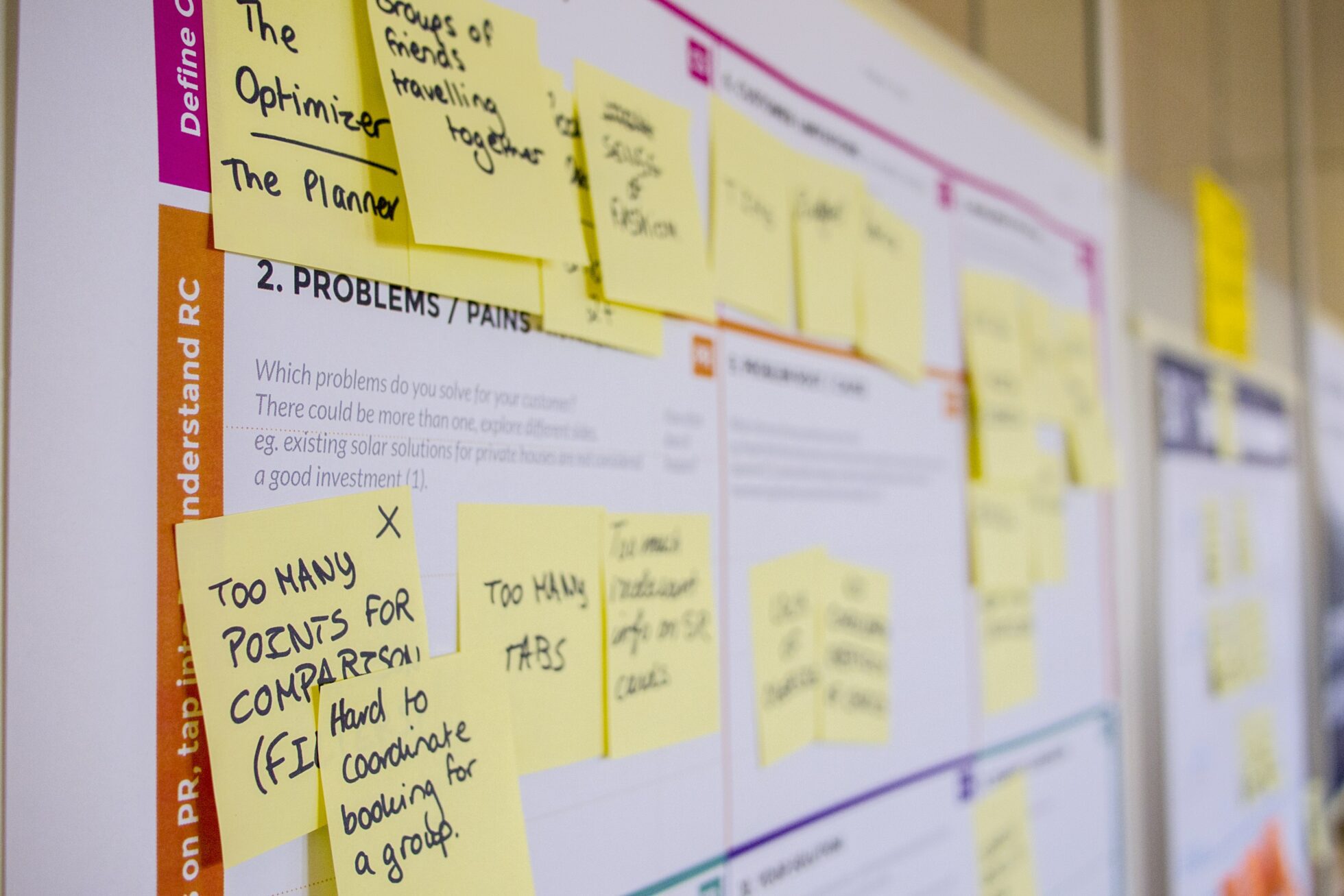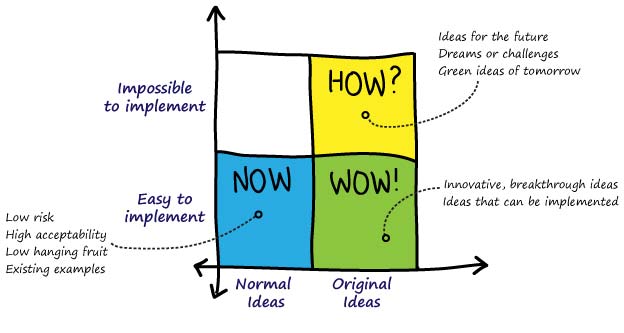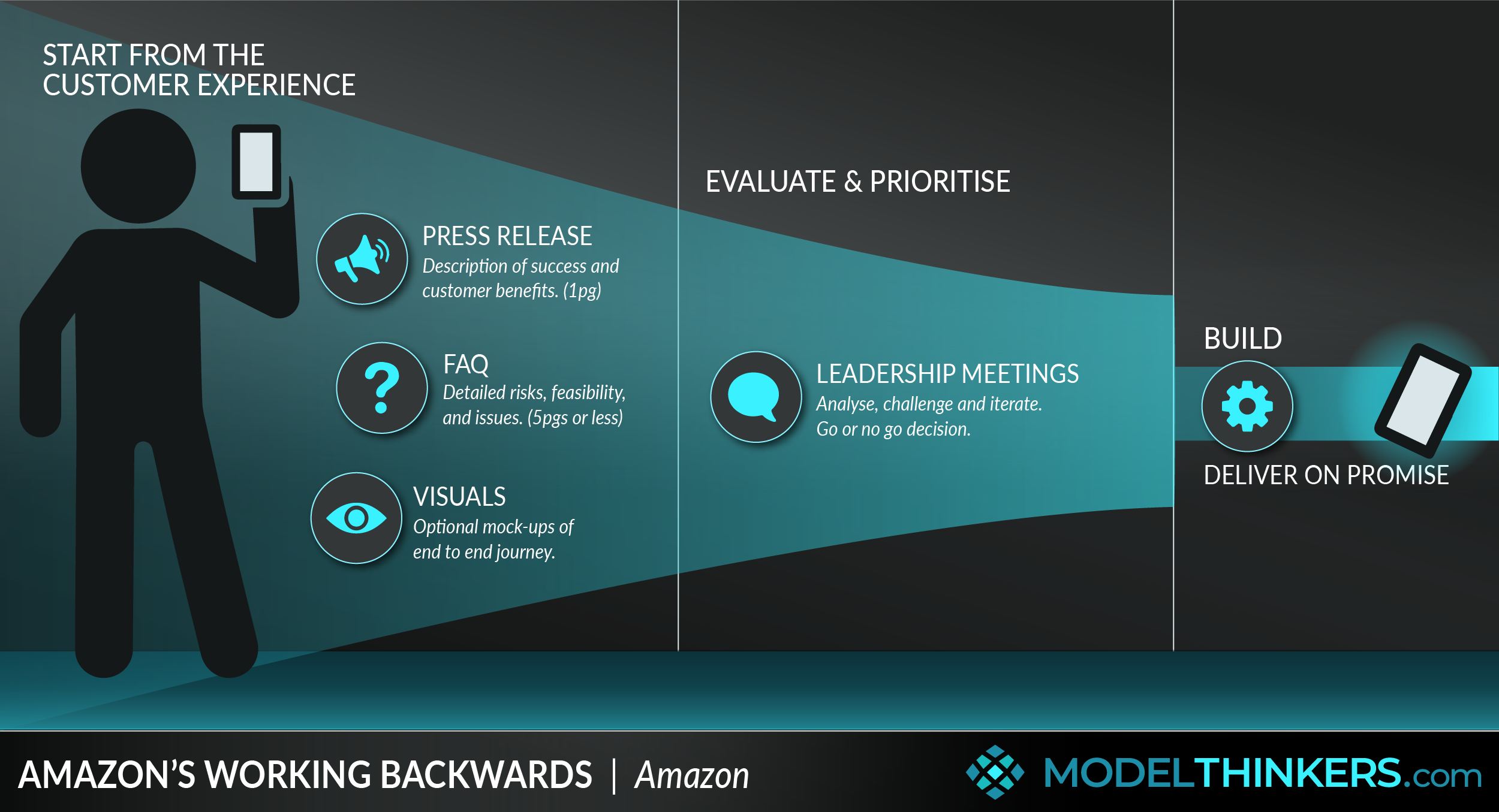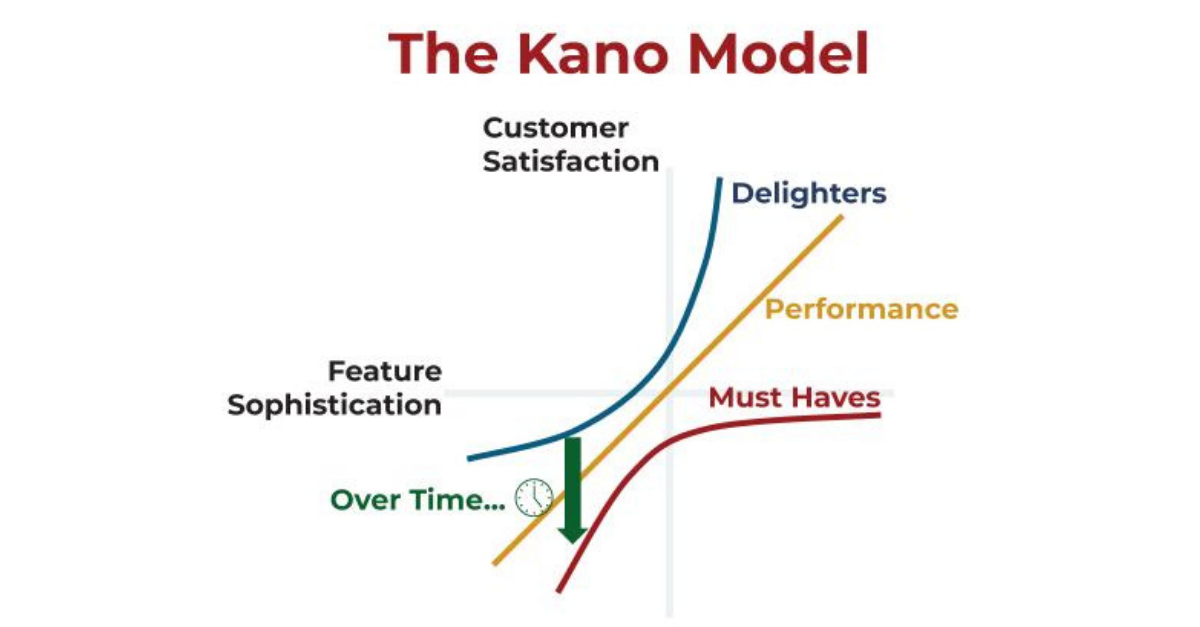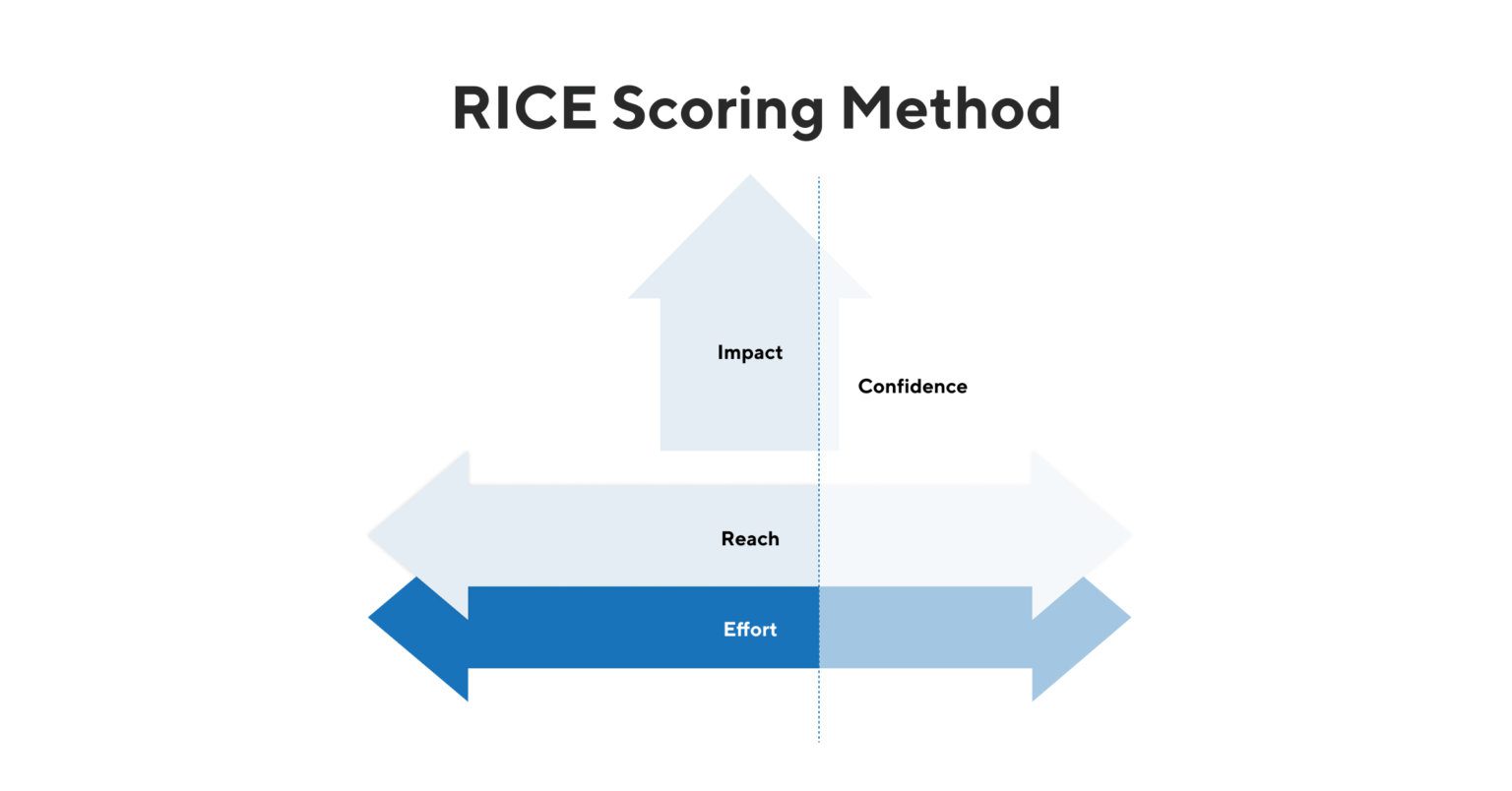Produktmanagement-Frameworks sind so etwas wie der absolute Spickzettel, wenn es darum geht, im Produktmanagement etwas zu erreichen. Sie geben Ihnen eine Vorstellung davon, wo Sie anfangen, wohin Sie gehen und wo Sie innehalten und Bilanz ziehen sollten. Und das alles auf eine überschaubare und flexible Weise.
Den richtigen Rahmen zu finden, kann allerdings schwierig sein. Manche PMs treten in eine Stelle ein, und es gibt einen Rahmen, der schon seit Ewigkeiten besteht... aber er funktioniert nicht. In anderen Fällen ist ein Unternehmen ganz neu, und man muss verschiedene Modelle ausprobieren, um das richtige zu finden.
Um es klar zu sagen: Rahmenwerke sind nicht nur dazu da, das Produktmanagementteam zu leiten. Nein, nein, nein! Sie dienen einem viel höheren Zweck als dem.
Aber die Sache ist die: Das Produkt ist HART. Als PM haben Sie die ganze Verantwortung, aber nur eine Illusion von Macht.
@tldv.io Zu freundlich! Zu nett! #Produkt #Produktmanagement #Startup #Applaus #Komödie
♬ Originalton - tldv.io - KI-Meeting-Recorder
In der Tat hat man als Teil des Produkts oft NULL Entscheidungsbefugnis - es sei denn, man überzeugt alle um sich herum, dass man weiß, was man tut, so dass sie darauf vertrauen, dass man weitermacht... mit minimaler Einmischung.
Hier können Produktmanager-Frameworks helfen. Sie leiten Sie und das Team nicht nur durch den Prozess, sondern sind auch greifbar und zugänglich: Schauen Sie, das ist es, was wir tun, und hier sind die Gründe dafür, die Sie allen Neinsagern im Unternehmen entgegenhalten können.
@tldv.io WAS MACHT BIZOPS????? #tech #Startup #Produkt #Entwicklung #Verkauf #Unternehmenshumor
♬ Originalton - tldv.io - KI-Meeting-Recorder
Also, ohne weitere Umschweife... hier ist eine umfangreiche Liste von Produktmanagement-Frameworks.
Produktmanagementrahmen für DAYZ
Wie jetzt Wow
Das von Gamestorming entwickelte How Now Wow-Framework ist ein Werkzeug zur Ideenauswahl, das Produktteams dabei hilft, Prioritäten zu setzen, was sie auf dem Markt anbieten können.
Es verwendet drei Kriterien - How Now und Wow - um Ideen zu bewerten.
Das Wie wird verwendet, um zu bewerten, wie gut ein Unternehmen die Idee umsetzen kann.
Nun wird geprüft, wie schnell die Idee umgesetzt werden kann.
Wow" wird verwendet, um den "Wow!"-Faktor der Funktion oder Lösung zu bewerten.
Es eignet sich besonders für Teams, die ein Problem visualisieren oder einzelne Aktionspunkte auf der Grundlage verschiedener Prozesselemente ausarbeiten müssen.
Rückwärts arbeiten, auch bekannt als die Amazonas-Methode
Der Rahmen der Rückwärtsarbeit ist ziemlich einfach. Man arbeitet sich von der Marktreife des Produkts zurück zum ursprünglichen Problem. Sie beginnen den Prozess mit der Erstellung einer Pressemitteilung für Ihr neues Produkt und arbeiten sich dann zu einer präzisen Problemstellung zurück, die als Grundlage für Forschung, Kreativität und Tests dienen kann.
Dies ist besonders nützlich, wenn sich mehrere Beteiligte auf dieselbe Problemstellung einigen müssen, um voranzukommen. Außerdem hilft es, Forschung, Ideenfindung und Tests auf ein einziges Problem oder Ziel zu konzentrieren.
Das ist zwar eine großartige Möglichkeit, das Konzept zu beweisen, aber man kann auch argumentieren, dass es ein bisschen wie "das Pferd von hinten aufgezäumt" ist - ein bisschen wie "wir passen das Problem an unsere Lösung an".
Zu erledigende Aufgaben
Jobs-to-be-done (oder JTBD) ist zuallererst ein fester Favorit hier bei tl;dv. Wir haben sogar einen ganzen Artikel über JTBD geschrieben; so sehr lieben wir es. Beim JTBD-Framework geht es darum, zu verstehen, was Ihre Kunden motiviert, ein Produkt zu kaufen oder zu benötigen, und was die Benutzer "anheuern" können, um ihnen bei der Erfüllung einer "Aufgabe" zu helfen - d. h. ein Ziel in ihrem Leben zu erreichen. Der JTBD-Rahmen konzentriert sich auf den Kunden und hilft ihm, seine Aufgaben auf eine erfüllendere, produktivere und einfachere Weise zu erledigen.
Es ist ein großartiger Rahmen, um die Motivationen Ihrer Nutzer zu verstehen und Produkte zu entwickeln, die speziell auf sie zugeschnitten sind. Es regt Sie auch dazu an, über Lösungen nachzudenken, die es vielleicht noch nicht gibt, die aber dennoch denselben Zweck erfüllen.
"Insgesamt geht es bei JTBD darum, die Ziele zu verstehen, die die Menschen erreichen wollen, und das Erreichen dieser Ziele bedeutet einen Fortschritt in ihrem Leben."
Jim Kalbach, The Jobs To Be Done Playbook: Richten Sie Ihre Märkte, Ihre Organisation und Ihre Strategie an den Kundenbedürfnissen aus Tweet
Modell Kano
Must-Haves: Dies sind die absoluten Notwendigkeiten, die Ihre Produkte haben müssen, um lebensfähig zu sein - betrachten Sie dies als die Funktionen, ohne die Sie nicht leben können.
Leistungsattribute: Dies sind Merkmale, die sich auf die Leistung des Produkts auswirken. Sie sind zwar optional, tragen aber zur Verbesserung eines Produkts bei.
Vorzüge: Dies sind die Vorzüge Ihres Produkts, die Ihre Kunden begeistern können.
Gleichgültig: Diese Funktionen sind für die Kunden so oder so nicht von Bedeutung. Sie haben keinen wirklichen Einfluss.
Unzufriedene Kunden: Dies sind Funktionen, die den Kunden aktiv nicht gefallen. Vielleicht wären sie ohne sie besser dran gewesen.
Dieser Rahmen kann Teams dabei helfen, bei der Entwicklung von Funktionen Prioritäten zu setzen, je nachdem, was die Kunden schätzen. Es ist auch eine großartige Möglichkeit, Trends und Muster in der Phase der Nutzerforschung zu erkennen, und kann dabei helfen, Strategien und Pläne zu entwickeln.
RICE-Priorisierung
RICE ist ein Priorisierungsrahmen, der dazu dient, Aufgaben oder Produktmeilensteine auf der Grundlage ihrer geschätzten Auswirkungen und der Einfachheit ihrer Umsetzung zu priorisieren.
Das Akronym steht für:
Reichweite: Die Anzahl der Personen oder Systeme, auf die sich die Aufgabe auswirken wird.
Auswirkung: Das Ausmaß der Veränderung oder Verbesserung, die die Aufgabe mit sich bringen wird.
Zuversicht: Der Grad des Vertrauens in die Einschätzung der Reichweite und der Auswirkungen der Aufgabe.
Aufwand: Der Zeit- und Ressourcenaufwand, der für die Erledigung einer Aufgabe erforderlich ist.
Der RICE-Rahmen hilft den Teams, Entwicklungen und Initiativen auf der Grundlage ihrer potenziellen Auswirkungen und des für ihre Verwirklichung erforderlichen Aufwands nach Prioritäten zu ordnen. Höhere Werte für Reichweite, Wirkung und Vertrauen sowie niedrigere Werte für den Aufwand führen zu einer höheren RICE-Gesamtpunktzahl und somit zu einer höheren Priorität.
Das Modell ist bis zu einem gewissen Grad sehr simpel, und obwohl es einige sehr klare Hinweise geben kann, fehlt es ihm an Nuancen.
Business Model Canvas
Die Business Model Canvas ist ein visuelles Instrument zur Beschreibung und Analyse der wichtigsten Elemente eines Geschäftsmodells. Alexander Osterwalder hat es in seinem Buch "Business Model Generation" vorgestellt. Die Leinwand besteht aus neun Bausteinen, die die wesentlichen Elemente eines Geschäftsmodells erfassen:
Kundensegmente: Hier werden die verschiedenen Kundengruppen definiert, auf die das Unternehmen abzielt.
Nutzenversprechen: Dies beschreibt die einzigartigen Vorteile, die das Unternehmen seinen Kunden bietet, auch bekannt als USP.
Kanäle: Hier wird dargelegt, wie das Unternehmen seine Kunden erreicht und mit ihnen interagiert.
Kundenbeziehungen: Hier wird definiert, welche Art von Beziehungen das Unternehmen zu seinen Kunden unterhält.
Einnahmeströme: Hier werden die Einnahmequellen des Unternehmens beschrieben.
Schlüsselressourcen: Hier werden die wichtigsten Ressourcen genannt, die für den Betrieb des Unternehmens erforderlich sind.
Schlüsselaktivitäten: Hier werden die wichtigsten Aktivitäten beschrieben, die das Unternehmen durchführen muss, um sein Wertversprechen zu erfüllen.
Wichtige Partner: Hier werden die wichtigsten Partner und Lieferanten aufgeführt, auf die das Unternehmen angewiesen ist, um sein Wertversprechen zu erfüllen.
Kostenstruktur: Hier werden die mit dem Betrieb des Unternehmens verbundenen Kosten dargelegt.
Das Business Model Canvas bietet einen strukturierten Ansatz zur Entwicklung und Prüfung neuer Geschäftsideen. Es hilft Organisationen, ihr Geschäftsmodell den Stakeholdern klar zu vermitteln. Es deckt fast alle Eventualitäten ab und ist sehr Stakeholder-freundlich, was es zu einem großartigen Rahmen für die Überzeugung von tiefgreifender Innovation macht (lies: MEHR RISIKO!)

Roadmap zur Kundenreise
Wir sind zwar der Meinung, dass Roadmaps ein wenig überbewertet werden, aber die Customer Journey Roadmap ist ein Produktmanagement-Framework, dessen Kernstück sie ist.
Dieser Rahmen wird verwendet, um die verschiedenen Phasen und Erfahrungen eines Kunden bei der Interaktion mit einem Unternehmen zu visualisieren und zu verstehen. Der Rahmen soll Unternehmen helfen, Schmerzpunkte, Verbesserungsmöglichkeiten und Bereiche zu identifizieren, in die sie investieren können, um das Kundenerlebnis zu verbessern.
Ein Fahrplan für die Customer Journey umfasst in der Regel die folgenden Phasen:
Bekanntheit: Die Phase, in der der Kunde auf das Unternehmen und seine Angebote aufmerksam wird.
Erwägung: Die Phase, in der der Kunde das Unternehmen und sein Angebot im Vergleich zu seinen Konkurrenten bewertet.
Kauf: Die Phase, in der der Kunde beschließt, das Produkt oder die Dienstleistung zu kaufen.
Lieferung: Die Phase, in der der Kunde das Produkt oder die Dienstleistung erhält und nutzt.
Loyalität: Das Stadium, in dem der Kunde eine Beziehung zu dem Unternehmen aufbaut und möglicherweise zu einem Stammkunden wird.
Durch die Darstellung der einzelnen Phasen der Customer Journey können Unternehmen Einblicke in die Bedürfnisse und Wünsche der Kunden gewinnen und Möglichkeiten zur Verbesserung des Kundenerlebnisses und zur Steigerung der Kundenzufriedenheit ermitteln. Auch hier geht es hauptsächlich um eine produktorientierte Entwicklung, aber die Kundenerfahrung wird von einem ganzheitlichen Standpunkt aus betrachtet.
Minimales lebensfähiges Produkt
Das Minimum Viable Product Framework wird verwendet, um ein Produkt mit minimalem Aufwand und maximalem Tempo zu entwickeln, zu testen und auf den Markt zu bringen. Es ist auf Geschwindigkeit und den Weg des geringsten Widerstands zum Markt ausgelegt.
MVP konzentriert sich auf die Freigabe der Kernfunktionen eines Produkts, die für die Bereitstellung von Mehrwert für die Kunden wesentlich sind. Durch die Erstellung eines MVP können Unternehmen frühzeitig im Entwicklungsprozess Kundenfeedback einholen und notwendige Verbesserungen vornehmen, bevor sie das Produkt offiziell auf den Markt bringen.
Viele Menschen gehen davon aus, dass ein MVP ein Prototyp ist, aber das ist er nicht. Es ist ein eigenständiges Produkt, aber es ist die Grundlage, auf der später aufgebaut werden kann.
Die Erstellung eines MVP ermöglicht es Unternehmen, ihre Hypothesen über die Kundennachfrage und die technische Machbarkeit zu testen, bevor sie zu viel Zeit oder Ressourcen in die Entwicklung des gesamten Produkts investieren.
Darüber hinaus ermöglicht es Unternehmen, Produkte schnell auf den Markt zu bringen, ohne sofort perfekte Lösungen zu entwickeln, sondern sie zu iterieren, wenn sie mehr darüber erfahren, was für ihre Kunden am besten funktioniert. Es ist das Äquivalent des Produktmanagementrahmens zu "fertig ist besser als perfekt".
Insgesamt kann die Entwicklung eines MVP zu einem besseren Verständnis der Kundenbedürfnisse, schnelleren Lernzyklen und einem effizienteren Produkteinführungsprozess führen. Allerdings birgt sie auch einige Risiken, Zeitdruck und eine Menge Arbeit, die man sich selbst machen muss. MVPs sind aber durchaus erfolgreich. Berühmte Unternehmen, die auf der Grundlage von MVPs gegründet wurden, sind Facebook, DropBox, Airbnb, Spotify und Twitter.
AAARR, auch bekannt als Piratenmetrik

Oh, wie sehr wir uns wünschen, das wäre alles echtes Piratenzeug. Mit Papagei auf den Schultern, Entermesser und Davy Jones' Locker. Aber, leider! Der AAARR-Rahmen ist nur im AAAARR-Teil piratenmäßig.
Der AAARRR-Rahmen ist zwar nicht so aufregend wie das Segeln auf hoher See, aber er hilft den Unternehmen, die wichtigsten Kennzahlen zu verfolgen und zu messen. Dadurch erhalten sie Einblicke in die Art und Weise, wie die Kunden ihre Produkte annehmen und welche Änderungen sie vornehmen müssen, um das Kundenverhalten zu verbessern.
Die fünf Phasen des Rahmens sind:
Akquisition: Die Anzahl der neu gewonnenen Kunden.
Aktivierung: Die Anzahl der Kunden, die eine wertvolle erste Erfahrung mit dem Produkt oder der Dienstleistung machen.
Bindung: Die Anzahl der Kunden, die das Produkt oder die Dienstleistung im Laufe der Zeit weiter nutzen.
Weiterempfehlung: Die Anzahl der Kunden, die neue Kunden für das Produkt oder die Dienstleistung werben.
Einkünfte: Die Höhe der von den Kunden erzielten Einnahmen.
Über die Planke gehen: Nein, der ist nicht echt. Wir wollten nur, dass es richtige Piraten sind 🙁.
Hooked-Methode
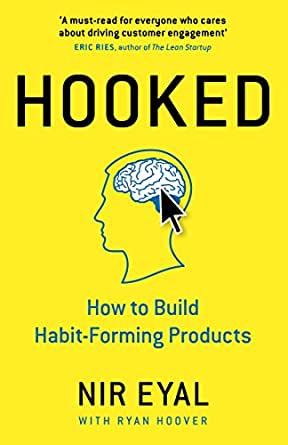
Die Hooked-Methode ist ein von Nir Eyal entwickeltes Rahmenwerk, das Unternehmen beim Aufbau von Kundenloyalität hilft. In einem anderen Beitraghaben wir sogar Nirs Buch empfohlen.
Das Modell der Hooked-Methode basiert auf der Entwicklung von Produkten oder Dienstleistungen, die "Aufhänger" sind, die die Aufmerksamkeit der Kunden fesseln und sie dazu bringen, immer wieder zu kommen. Im Grunde machen sie süchtig. Das ist umstritten, aber machen wir mit.
Nach dem Hooked-Modell gibt es vier Schlüsselkomponenten für einen erfolgreichen Aufhänger:
Auslöser: Jedes Ereignis, das bei einem Kunden den Drang auslöst, etwas zu unternehmen.
Aktion: Jede Aktion, die der Kunde als Reaktion auf den Auslöser durchführt.
Belohnung: Ein Anreiz, der die Kunden zu wiederholten Handlungen anregt.
Investition: Den Kunden die Möglichkeit bieten, in das Produkt oder die Dienstleistung zu investieren, was ihre Bereitschaft zu wiederholtem Handeln erhöht.
Wenn Unternehmen diese Komponenten verstehen und sie nutzen, um ein ansprechendes Kundenerlebnis zu schaffen, können sie ihre Kunden langfristig an sich binden. Sie wird oft bei der Entwicklung von Apps verwendet, damit wir unser Telefon nicht mehr aus der Hand legen können.
ie Verwendung einer Suchmaschine wie Google oder Alexa in Ihrem Haus spiegelt einen Großteil der Hooked-Methode wider. Sie haben eine Frage, über die Sie nicht nachdenken, in eine Bibliothek gehen oder gar einen Freund fragen. Sie geben sie in Google ein oder rufen: "Alexa, wie viele Spatzen passen in einen Dodge Charger?" Wie bei Pawlows sabberndem Hund tritt ein Ereignis ein, z. B. ein Gedanke, und Sie greifen nach dem Produkt.
Übermäßige Abhängigkeit von Rahmenwerken?
Die oben genannten Beispiele sind großartig; sie haben alle ihren Nutzen und ihren Platz. Allerdings sind Frameworks nicht das, was ein Produkt ausmacht. Sicherlich werden sie einen Einfluss haben, aber selbst das beste Rahmenwerk wird nur dann erfolgreich sein, wenn die Vorarbeit geleistet wurde.

Bevor Sie überhaupt entscheiden können, welchen Rahmen Sie verwenden wollen, brauchen Sie das Vertrauen und die Zustimmung aller Beteiligten. Das kann die oberste Führungsebene sein, die Ingenieure, die Designer, das Marketing, verdammt! Sogar das Vertriebsteam, das ständig neue Funktionen verkauft, die es gar nicht gibt (wir 
Wenn eines dieser Teams denkt, dass Sie nur Mist bauen, dann kann Sie kein noch so effektiver Rahmen retten. Bei einem Produkt geht es merkwürdigerweise genauso sehr um Marketing und den Verkauf der Idee an Ihr internes Team wie um Forschung, Design und Ideen. Alle müssen hinter denselben Ideen und Zielen stehen, um das Produkt zu verwirklichen.
Die andere Sache bei Frameworks ist, dass sie in der Theorie immer eine tolle Idee sind. ABER die Realität hat die Angewohnheit, Ihre besten Ideen in den Hintern zu beißen. Unser Rat? Seien Sie sehr, sehr vorsichtig, wenn es darum geht, wie alle Beteiligten den Rahmen erhalten. Kein zustimmendes Nicken und Lächeln, nur um dann später alles wieder zu verwerfen. Die Stakeholder müssen sich voll und ganz auf den Produktrahmen einlassen - aber bedenken Sie, dass sie, selbst wenn der Rahmen perfekt eingehalten wird, immer noch andere Metriken und KPIs (mit anderen Worten: Gemeinkosten) als Hauptindikatoren für den Erfolg ansehen werden.

Ein weiterer potenzieller Nachteil von Rahmenregelungen ist, dass sie die PMs faul machen können, und das liegt ganz bei Ihnen. Blind dem "Prozess" zu folgen, ohne Raum für Anpassungen, ist nicht unbedingt die effektivste Sache. Hey, Sie werden das Kästchen abhaken und den Dopamin-Kick bekommen, wenn Sie die Aktion abschließen, aber wo bleibt die Innovation? Sie können ein ganzes Produkt auf Autopilot erstellen, aus dem Mundwinkel sabbern und alle roten Fähnchen übersehen, weil Sie den Platz voll ausnutzen,

Und schließlich unser letzter heißer Tipp für diese Sitzung, ein Tipp, der Ihnen weiterhelfen wird: Teams, Menschen und PMs können leicht "prozessmüde" werden. Wie bereits erwähnt, kann es passieren, dass man auf Autopilot schaltet, wenn es immer wieder dasselbe ist, aber auch ein brandneuer Prozess, der von einem neuen PM mit leuchtenden Augen eingeführt wird? Ja, daran muss man sich erst einmal gewöhnen. Die Teams um den neuen PM, Ingenieure, Designer usw., werden ihr Bestes geben. Sie lernen, passen sich an, finden neue Arbeitsabläufe und übernehmen neue Frameworks, aber sie werden an eine Wand stoßen. Framework-Burnout ist real. Wenn Sie ein neues Framework einführen wollen, ist das in Ordnung, aber warten Sie ab und wählen Sie den richtigen Zeitpunkt dafür.
Eine Sache einfacher machen
Unabhängig davon, für welchen Rahmen Sie sich entscheiden, gibt es eine Fülle von tollen Vorlagen, Videos und Ressourcen, die Ihnen den Einstieg erleichtern. Aber ganz gleich, für welchen Rahmen Sie sich entscheiden - die Datenerfassung und die Dokumentation der Besprechungen werden ein wesentlicher Bestandteil des Pakets sein.
Hier kommt ein KI-Meeting-Tool wie tl;dv ins Spiel. Die Phase der "Produktentdeckung" ist in mehr oder weniger jedem Rahmen vorhanden, weshalb Sie eine Produktforschungssoftware benötigen, um Erkenntnisse zu gewinnen und die Zustimmung der Beteiligten zu erhalten.
Eine leicht zu navigierende Oberfläche ermöglicht es Produktteams, Nutzererkenntnisse zu sammeln, zu verstehen und zu priorisieren, bevor die späteren Phasen der Produktplanung und Produktentwicklung beginnen. Alle Ihre Forschungsergebnisse werden an einem Ort gespeichert und können leicht mit Stakeholdern und Teamkollegen geteilt werden.
Mit tl;dv können Sie sicherstellen, dass die gesamte Vorarbeit geleistet ist, bevor Sie überhaupt an die Rahmenbedingungen denken. Produktteams verwenden den Zoom und Google Meet für die Dokumentation von Meetings, um Aktionspunkte leichter nachverfolgen zu können, Fortschritte zu verfolgen und abwesende Mitarbeiter auf dem Laufenden zu halten. Und das Beste daran: Es ist kostenlos!

